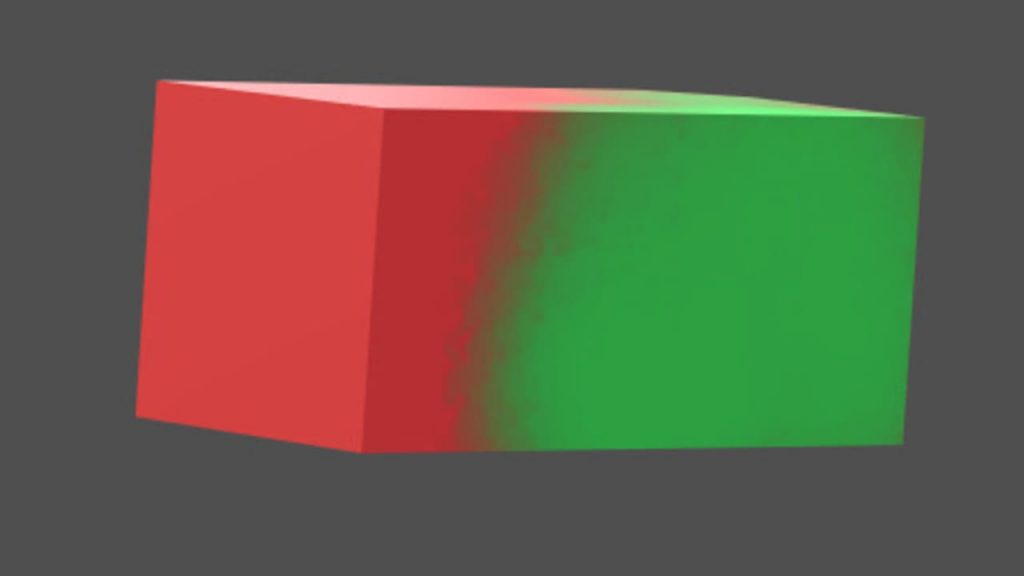What color does red and green make? This is a question that has stumped many people over the years.
In this article, we will provide a comprehensive guide to colors. We will discuss what are primary colors, secondary colors, tertiary colors, how to mix colors, what is a color wheel, complimentary colors, and more!
So, whether you are an artist looking to create new shades of brown, or just curious about what color red and green make, read on!

What Color Does Red and Green Make?
When combining red and green paint, you’ll almost always end up with a bit unpleasant hue of brown. Green is made up of blue and yellow, therefore mixing it with red is like combining all three primary colors at once, which would produce brown.
Red and green are opposites on the color wheel, which means they are complementary hues. Complementary colors look great together in designs, but they clash when combined.
As a result, unless you’re searching for a specific shade of brown, you might wish to avoid mixing the two colors.
Color Types
You might have heard about these two types but what do they mean? Let’s find out.
1. Primary Colors
The primary colors, in essence, are used to create all other color pairings we see. They are called the primary colors because they make up the first “layer” or basic colors. Red, yellow, and blue is the primary colors for art.
2. Secondary Colors
The colors that result when two primary hues are combined at their most basic level are known as secondary colors. They are the “second” level of color since they need to be mixed to generate, but the primary hues do not.
Purple, green, and orange are examples of secondary colors. Blue and red combine to produce purple. Green can be produced by combining blue with yellow. Orange may be created by mixing red with yellow.
3. Tertiary Colors
A color wheel is frequently completed with additional color pairings. A primary and a secondary color are combined to create these hues.
The tertiary colors are created by mixing the primary and secondary hues. The names of the tertiary hues come from the primary and secondary colors they include.
4. Neutral Colors
The three neutral hues are black, white, and brown. These neutral hues may be combined in a variety of ways to make tans, beiges, and grays. The primary colors are not considered to be neutral hues.
Different tones of the same colors can be created by combining the neutral hues with any one of the primaries, secondaries, or tertiaries.
Adding white to another color will lighten the color and make it more pastel. For example, adding white to red will create pink. The greater the quantity of white paint you add, the lighter the pink shade will be.
Adding black to another color will darken it. This will cause the opposite of what happens when you add white. For example, if you start with a neutral blue and add black, you may end with a color closer to navy.
Types of Color Mixing
There are two types of color mixing choices, which are an additive and subtractive mixture.
1. Additive Mixing
The additive color mixing is not the same as what we do on a daily basis. Modern technology has become a conventional technique of combining colors that we take for granted.
When combining colors in additive mixing, you may create a wide range of hues by varying the ratios of different wavelength lights. In the media, additive color mixing is frequently employed; for example, it is quite common to see colors projected on computer and television displays.
Additive mixing allows you to combine colors in many ways, two of which are as follows: the usage of two colors, and the use of two or more spectral color lights.
When you combine two primary colors together, the television’s electron guns will fire two different hues rapidly and your eyes will perceive them blended into a completely new discovered color.
In the second form of additive color mixing, two or more lights are combined by placing them close to one another, causing your naked eyes to mix them into various hues.
2. Subtractive Mixing
The subtractive technique of mixing colors is more of an intuitive method of color mixing that is linked to the conventional way of combining colors.
When pigments in an object absorb white light and then reflect the other remaining pigments within the color, it’s known as the subtractive approach of mixing colors.
The color red, for example, reflects all wavelengths of white light except the red pigment. This basic definition is how our minds will perceive the hue, while other hues are not reflected outwardly.
The method of subtractive color mixing is quite simple. Print production is one example where this technique is frequently employed.
Types of Color Wheels
Color wheels are used to distinguish between additive and subtractive color mixing procedures.
1. The RGB Color Wheel
Red, blue, and green are the primary colors of light employed on the RGB wheel. The secondary hues are created by combining the primary colors. Cyan, yellow, and magenta are created when two or more primary hues are combined.
The mixing of red and green hues in the RGB color wheel will result in yellow secondary color, according to the arrangement of primary colors.
The creation of cyan secondary color occurs when green and blue primary colors are combined. According to the combination of Red with Blue primary color, Magenta is formed as a secondary color.
The RGB color wheel for color production using light spectrum is almost directly opposite the CMYK color wheel option. The RGB color wheel uses the additive method of mixing colors to create new colors, while the CMYK uses the subtractive process of color mixing to operate.
2. The CMYK Color Wheels
The primary colors used in the CMYK are Cyan, Magenta, and Yellow, unlike the RGB color wheels utilized in the mixing of hues across the light spectrum.
The secondary colors created by combining primary hues in the RGB color wheels are Cyan, Magenta, and Yellow. Because the primary colors in the CMYK are secondary hues from the RGB color wheels, new tints can be produced by merging secondary colors.
The layers of the primary colors, Cyan, Magenta, and Yellow (CMY), are overlapped in color printing to create color combinations. These overlapping are achieved at various transparency levels.
When the hues overlap, the light is transmitted through the ink and reflects off the surface below, creating a phenomenon known as the substrate.
The Cyan, Magenta, and Yellow CMY ink is often used as halftone dots before being subtracted from the reflected light in an inverse proportion to the RBG (Red, Blue, and Green) to give your eyes the impression of the intended color.
Brown Color: How to Make it Without Red and Green?
Green is a simple color to mix because it is a secondary hue, which implies it is a combination of two primary hues. When you combine equal parts blue and yellow, you obtain green. If you increase the amount of blue or yellow, you’ll get blue-green or yellow-green, also known as tertiary colors.
The process of mixing two primary colors may be simplified for the sake of this example. However, it’s difficult to combine red and green. Red is also a major color, but it is feasible to achieve. However, you will need to utilize a special sort of subtractive mixing in order to do so.
Make red by using yellow, magenta, and cyan as your primary colors. Then you may mix yellow and magenta to make red. Yellow, cyan, and magenta are used exclusively by printers to create brilliant hues like crimson.
Different Shades of Brown
A simple brown may be produced by combining pure red, blue, and yellow colors, but there are other components you may add to get various shades of brown.
1. Mixing Lighter Brown
If you add white to your mix, you’ll get a lighter brown that resembles coffee or sandy beaches. To notice a significant shift, you may need to add a lot of white. However, extra red can be added to create the color of light wood and bricks.
2. Mixing Darker Brown
Adding a little bluer may provide you with a cooler tone, which is great for dark hair or deep woods.
Increasing the darkness of your image by using a dark blue or adding a touch of black might make it even darker, allowing you to use it for night settings or chocolate. Only utilize black sparingly since it has the potential to overpower the rest of the colors.
Mixing Colors: Won’t Always Get What Expected
It’s important to keep in mind that mixing two hues does not always result in the desired effect. While painting might give you a drab brown hue, lights will provide you with a vivid yellow.
It all depends on the type of color combination you’re using and the specific colors you choose, so don’t be afraid to experiment.
The more you play around with various types of color blending, the more intrigued you’ll become by different colors. Regardless of the sort of mixing you concentrate on, however, how these hues interact is fascinating and lovely.
Complimenting Colors
The colors adjacent to one another on their color wheels are described as complements. When mixed together, the two opposing hues generally become gray. In the CMYK system, complementing colors are red and green.
However, when you combine red and green in varying tones of brown to gray, they may vary from pale yellow to dark chocolate depending on your choice of colors.
Other examples of color harmonies are blue-green and red, which may combine pigments that appear gray because they’re mostly made up of cold tones.
However, due to the yellow particles in the green adding to warmer tones in the combined color mixture, a saccharine green and red combination produce more of a brown hue.
Conclusion
In conclusion, what color does red and green make? The answer is brown. To mix brown without red and green, you will need to use a special sort of subtractive mixing. There are different shades of brown that can be mixed by adding white or black.
Brown can also be mixed with other colors to produce different hues. When mixing colors, it’s important to keep in mind that you might not always get what you expect. Complimenting colors are two colors that are adjacent to each other on the color wheel. When mixed together, they usually become gray.
Additional Contents



